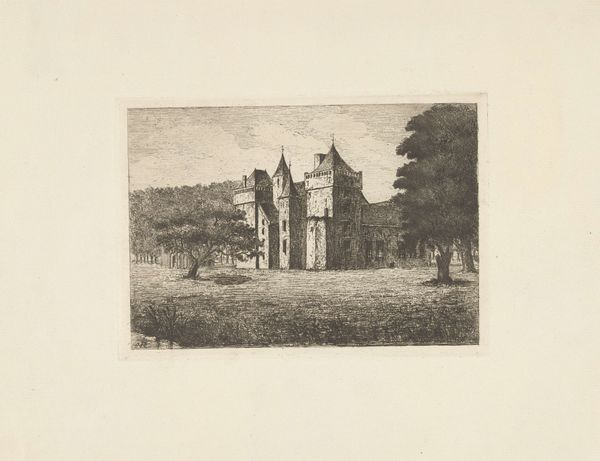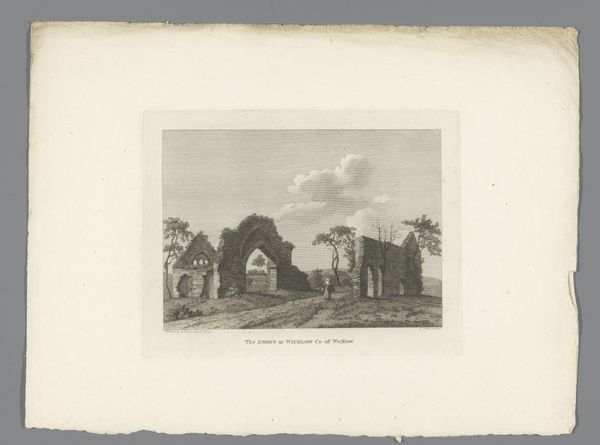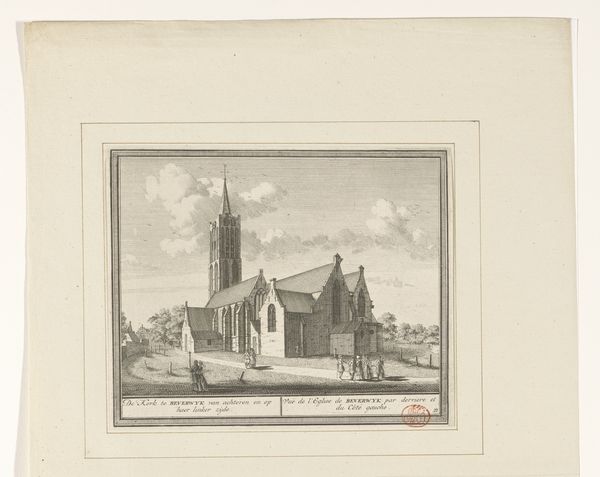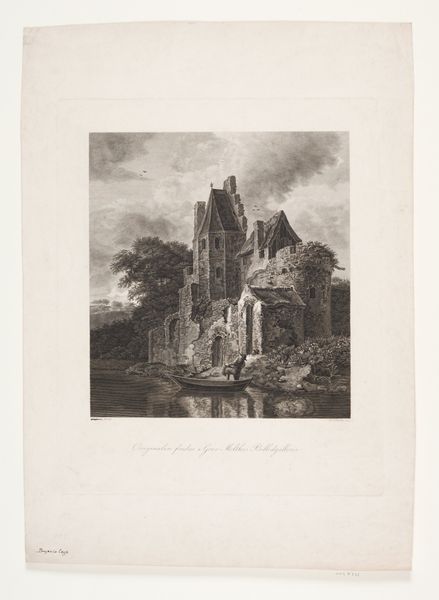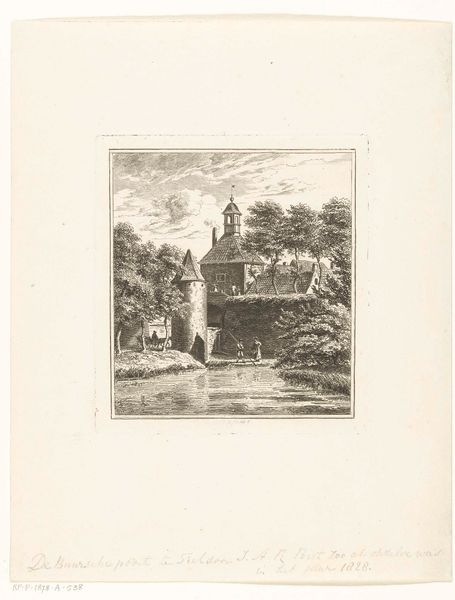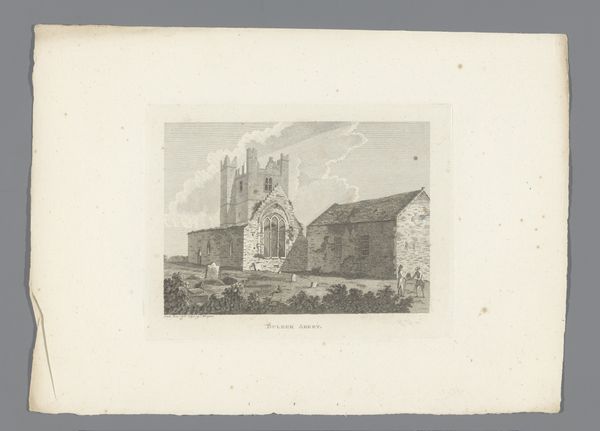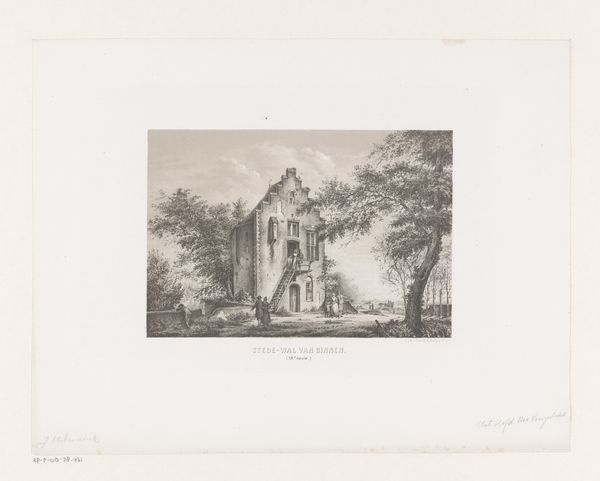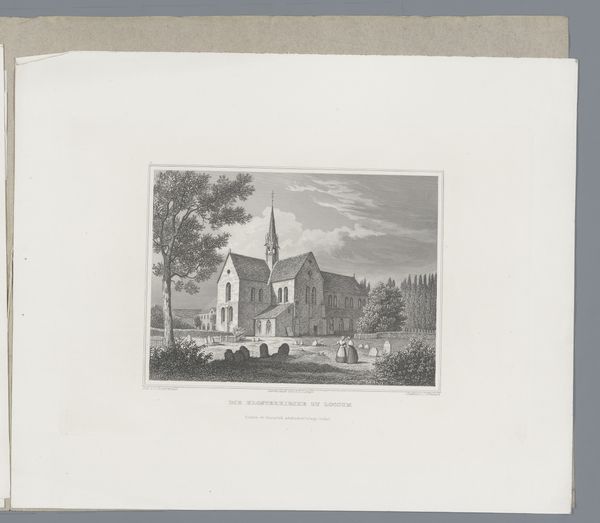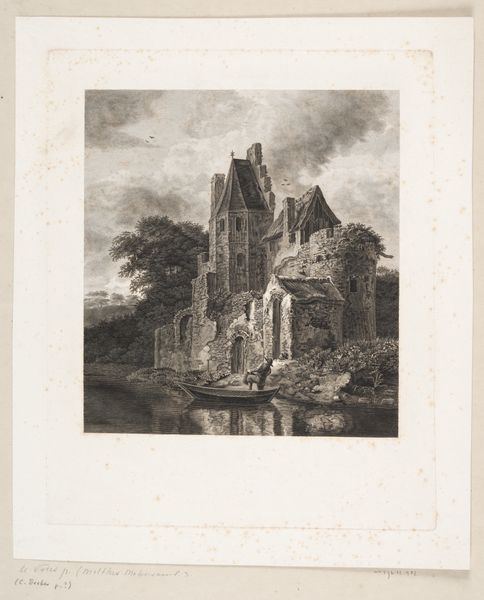
Dimensions: height 287 mm, width 225 mm
Copyright: Rijks Museum: Open Domain
Curator: Here we have "Landschap met man en een vrouw rustend bij een gothische ruïne," or "Landscape with a man and a woman resting by a gothic ruin" by Auguste Numans, likely created sometime between 1833 and 1879, crafted with etching and engraving. Editor: It feels…contemplative. Like a stage set for a memory. All gray washes and quiet forms. And there’s a wistfulness, a bit haunted by time itself. Curator: That melancholy atmosphere definitely connects to the broader Romantic movement. The ruin is a popular symbol in that period, representing the decline of empires and the transience of human endeavor. We see the intersection of humanity with a historical moment in decay. Editor: True, that gothic structure feels like a silent observer, hasn't it? It has seen everything come and go. It makes me wonder, though: what story are those two figures enacting in the foreground? Are they a couple on a picnic, oblivious, or refugees displaced by industrialisation finding some comfort? It does pose a contemporary angle on land use and property. Curator: That tension is precisely where its political dimensions emerge. It encourages consideration of class, gender, and access to spaces framed by both a romanticized past and an encroaching modern era. What seems merely aesthetic actually reflects ongoing struggles for autonomy. Editor: Huh. That’s interesting. You know, for a brief second, I felt a little sad looking at this piece...it's like the ruin is missing a purpose. But when thinking of those contemporary issues… it is indeed an emotional representation of resilience as well. Like life reclaims what power has left behind. Curator: Absolutely. I think viewing it as simply an architectural study is reductive. The print uses a historical setting to prompt conversations relevant to modern identity. Editor: Well, my initial impressions, paired with a good dose of context, made the picture way richer. Art history's like that secret sauce, huh?
Comments
No comments
Be the first to comment and join the conversation on the ultimate creative platform.

